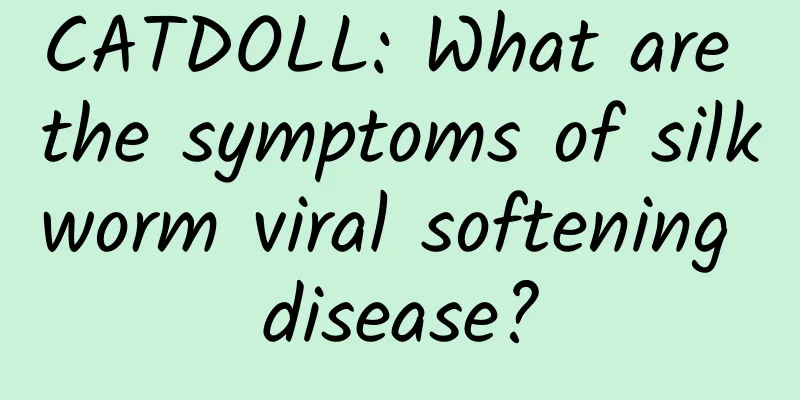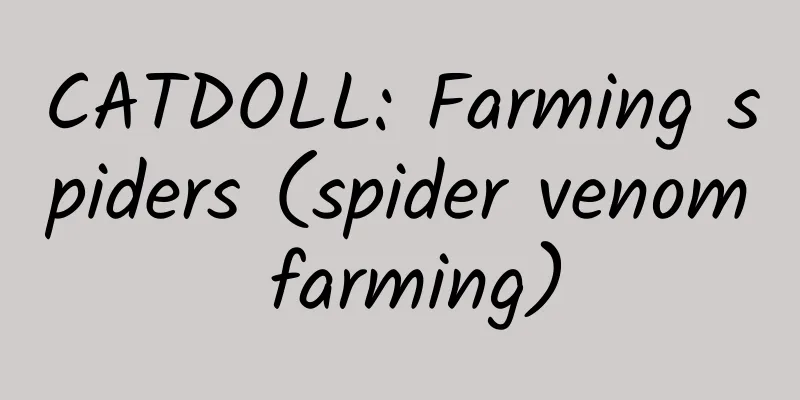CATDOLL : CATDOLL: What are the symptoms of silkworm viral softening disease?

1. What are the symptoms of silkworm viral softening disease?Viral disease is the most important type of silkworm disease, accounting for about 80% of the total incidence rate. It includes three types: blood-type pus disease, midgut-type pus disease and densoblastic disease. (1) Blood-type pus disease is commonly known as water white belly and crawling silkworms. It can occur at all ages. In production, it is more common after the third instar, especially from the middle of the fifth instar to around the time of mature silkworms. The incubation period is 3 to 4 days for young silkworms and 4 to 6 days for adult silkworms. The external symptoms of diseased silkworms are milky white body color, swelling all over the body, frantic crawling, easily broken skin, and they often crawl to the edge of the silkworm plaque and fall to the ground, oozing white pus and blood and dying. If this disease occurs during the hypnotic period of any instar, sleepless silkworms will appear. The skin of the diseased silkworms is tense and shiny, and is milky white. They will not eat mulberry leaves, and will keep crawling until they die of pus. If it occurs after feeding at any instar, the growth of the silkworms will stop, the body color will be milky white and will not turn green, the skin will be loose and wrinkled, the body will shrink, and the intersegmental membrane of the front segment will overlap with the back segment until death. If it occurs during the peak feeding period of the fourth and fifth instars, the intersegmental membranes of the diseased silkworms or the posterior half of each segment will rise, resembling bamboo nodes. If it occurs in the late fifth instar to before mounting the cocoon, the diseased silkworms will be fat, swollen and shiny, with a milky white body color, and the center of the segments will be swollen and arched, shaped like abacus beads, commonly known as pus silkworms. In a few cases of blood-type purulence, there will be burnt feet, black spiracles and symmetrical dark-brown circular lesions on both sides of the back. This disease often occurs during sleep or when about to shed its skin. (2) Midgut purulent disease is commonly known as dry white belly. The incubation period is 5 to 7 days. When the disease occurs, the size of the population is uneven, the development is uneven, and the age is prolonged. The diseased silkworms have empty heads and bodies, lie quietly around the silkworm nest, eat little or no mulberry leaves, have rusty bodies, and excrete sticky and white feces. When the diseased silkworms are dissected, the midgut can be seen to be swollen, milky white, and wrinkled. When the disease is mild, the posterior part of the midgut is white, and when the disease is severe, the entire midgut is white and swollen. Take a small piece of the diseased silkworm's midgut or sticky feces to make a temporary specimen. Examine it under a 400x microscope, and you can see hexagonal or quadrilateral polyhedral viruses with strong refractive power and uneven sizes. (3) Densoblastic disease is commonly known as hollow head disease. Sick silkworms do not eat mulberry leaves vigorously, their bodies turn yellow and they are mainly empty-headed. In severe cases, they stop eating mulberry leaves and crawl around the silkworm nest with their heads and chests raised, and they excrete brown liquid feces or sewage, and their mid-intestines are filled with yellow-brown dirty liquid. The affected population is unevenly developed and the size of individuals varies greatly. 2. What are the symptoms of viral upper respiratory tract infection?There are two common manifestations of viral upper respiratory tract infection: one is the common cold type, with symptoms of throat discomfort or sore throat, followed by runny nose, nasal congestion, sneezing, coughing, limb pain, fatigue, and headache. The other is pharyngitis type upper respiratory tract infection, with the main symptoms of sore throat, runny nose, nasal congestion, headache, coughing and general discomfort. 3. What is the preferred drug for upper respiratory tract infection in chickens?1. Streptomycin: Add streptomycin to the chicken’s drinking water for 5-7 days. 2. Beromycin: Mix beromycin into the chicken’s usual drinking water. 3. Kanamycin: Mix kanamycin into the chicken’s regular drinking water. 4. Doxycycline: Mix doxycycline into the chickens’ regular drinking water and add it for 5 consecutive days. 5. Tylosin Compound: Mix Tylosin Compound into the chickens’ usual drinking water, with an average of 2g of Tylosin Compound per kilogram of drinking water. 1. What medicine should be used for chickens with respiratory tract diseases? 1. Streptomycin On average, 1 million units of streptomycin should be added to every kilogram of drinking water for 5-7 consecutive days. For chickens with serious conditions, streptomycin should be injected intramuscularly for 2 consecutive days, twice a day, 200,000 units for adult chickens each time, and 80,000 units for chicks each time. After the injection, make sure to let them drink the drinking water containing streptomycin in time. 2. Beilimycin On average, 0.5 g of bethromycin soluble powder should be mixed into every kilogram of drinking water and taken continuously for 5 days. 3. Kanamycin On average, about 150mg-200mg of kanamycin should be mixed into every kilogram of drinking water and taken continuously for 5 days. 4. Doxycycline On average, about 100mg-200mg of doxycycline should be mixed into every kilogram of drinking water and taken continuously for 5 days. 5. Compound Tylosin On average, 2g of compound tylosin should be mixed into every kilogram of drinking water and taken continuously for 5 days. 6. Gao Limi Add 2g of galactoside per kilogram of drinking water for 5 consecutive days. 7. Fleroxacin In winter, put 100 mg of fleroxacin in every kilogram of water. In summer, put 25 mg-50 mg of fleroxacin in every kilogram of water. Take it continuously for 5 days. 2. What causes chickens to have respiratory diseases? 1. Viral infection Virus infection is the main cause of respiratory diseases in chickens. For example, mold in moldy feed, parasites and bacteria in drinking water, infectious bronchitis virus and laryngotracheitis virus can all destroy the balance of the respiratory mucosa and the immune system and cause respiratory system lesions in chickens. 2. Chicken house environment Chickens are sensitive to the environment. If the environment in the chicken house is unsanitary, the air is not circulated and fresh, and the dust content inside the chicken house is high, it will provide a carrier for the reproduction of pathogens and may induce respiratory diseases in chickens. 3. Feeding and management If the feeding and management level in the chicken house is not high, the number of farmed chickens is increased blindly, and the density of the chickens in the chicken house is too high, the ventilation in the chicken house may be inconvenient and the feed quality may be low, which may cause respiratory diseases in the chickens. 4. What are the symptoms and treatments of respiratory tract infection in chickens?【Typical symptoms】The upper and lower eyelids of sick chickens are swollen, and there are bubbles in the eyes. The eyes of sick elderly chickens may have cheese in them, and in severe cases, they may protrude outwards, like "goldfish eyes". There are a lot of bubbles in the intestines of dead chickens in the abdominal cavity. 【Treatment strategy】a. Emergency eye drops for immunization with Mycoplasma gallisepticum live vaccine. b. 48 hours after immunization, young chickens should be given 0.01% tylosin + 0.02% strong toxin in drinking water for 5 consecutive days; laying hens should be given Ma Xing Yu Xing Cao powder, mixed with feed at a ratio of 1%, for 6 consecutive days. 5. What are the differences between the symptoms of viral stomatitis and hand, foot and mouth disease?The difference between viral stomatitis and hand, foot and mouth disease is that in appearance, viral stomatitis only causes herpes around the mouth and lips, while hand, foot and mouth disease causes herpes in other parts of the body, especially on the hands and feet. In terms of daily manifestations, viral stomatitis generally has no other obvious symptoms except irritability, anorexia, fever, and swollen lymph nodes. Hand, foot and mouth disease also has symptoms of the nervous system and respiratory system, such as poor spirits, drowsiness, convulsions, and difficulty breathing. 6. Can doxycycline treat the respiratory tract of chickens?It can be treated. Doxycycline is the first choice for treating chicken respiratory tract diseases because it is cheap. If it is a stubborn respiratory tract disease and doxycycline is not effective, you can use tylosin or tylosin. If the effect of using the drug alone is not ideal, use it in combination with E. coli drugs or mycoplasma drugs! 7. What should I do if my chickens have respiratory disease?First of all, we need to understand the culprits that cause chicken respiratory diseases, including viruses, bacteria, mycoplasma, Haemophilus influenzae (MG), and some external culture environment factors, all of which may cause chicken respiratory diseases. Strengthen feeding management, regularly ventilate the chicken house, pay attention to temperature changes, and regularly disinfect the chicken house. Pay attention to vaccination and get vaccinated in time, which can effectively reduce the economic losses caused by chicken diseases. 8. What should I do if my cat does not have any viruses but keeps having recurring respiratory infections?Condition analysis: Chronic pharyngitis is a common disease, but it is difficult to eradicate. Guidance: It is recommended to pay attention to oral hygiene, such as remembering to rinse your mouth with cold water after eating, brushing your teeth every morning and evening, and exercising to strengthen your physical fitness. If an attack occurs, you can take some anti-inflammatory drugs such as amoxicillin to relieve symptoms. As for diet, try to avoid irritating foods, such as chili peppers, and try to avoid the stimulation of smoke and dust. I wish you a speedy recovery! 9. Laying hens have respiratory diseases and their faces are swollen. What’s going on?General swollen head in laying hens: caused by avian pneumovirus (SHS), swelling of the head and face, difficulty breathing, cough and runny nose. The disease is contagious and can spread from one shed to another. The mortality rate of broilers is high, and the egg production rate of laying hens can drop by about 15%. The flu caused by the avian influenza virus is mainly manifested by swelling of the face and swelled wattles. The disease is highly contagious. First, serious respiratory symptoms occur in the chickens, such as difficulty breathing, breathing with open mouths, making strange noises, and acute death. The characteristic manifestation is bleeding of the scales on the tibia and plantar part of the chicken legs.10. Chickens have difficulty breathing and breathe with their mouths open. What medicine is effective for chicken respiratory diseases?1 Epidemiology and clinical symptoms This disease usually occurs in meat chickens after 25 days. The feed intake of the affected chickens decreases. Some chickens have yellow-green loose feces. The chickens show severe respiratory tract, snoring, coughing, and some chickens stretch their necks and gasp. The autopsy showed severe tracheal congestion, pulmonary congestion, intestinal bleeding, and edema. 2. Cause analysis ① The chicken house environment is seriously polluted, the chicken density is too high, the chicken house is poorly ventilated, and there are too many harmful gases. ② Vaccine virus replication can trigger vaccine reactions, stimulate the upper respiratory tract mucosa, and cause upper respiratory tract inflammation. If the chicken house environment is poorly polluted at this time, the chickens are not prone to respiratory diseases. 3. Prevention and control measures ① Strengthen environmental control and improve the living environment of the chickens ② Reduce the density of the chickens and strengthen the ventilation of the chicken house ③ Use freeze-dried vaccines made from SPF chicken embryos for immunization ④ Add antibiotics before and after immunization to prevent the occurrence of respiratory diseases. ⑤ Use a human double-reed to add 4 pounds of water to the drinking water with analgin. ⑥ Eat red plum extract. |
>>: CATDOLL: What are the typical symptoms and pathological changes in chicken aflatoxin poisoning?
Recommend
CATDOLL: How to clean seafood
1. How to clean seafood Method 1: Soak shellfish,...
CATDOLL: Where are the people raising silkworms the most?
1. Where are the people raising silkworms the mos...
CATDOLL: What is a sea urchin? Is it an animal or a plant?
Most people have rarely eaten sea urchins, and ev...
CATDOLL: Charcoal heating in greenhouses has an impact on vegetables
The harmful substances contained in the smoke wil...
CATDOLL: Is there a future for silkworm breeding in 2021 (Can silkworm breeding make money)
1. Is there a future for sericulture in rural are...
CATDOLL: What does "Cicada Excellent Eight Years" mean?
1. What does Chanyou Eight Years mean? According ...
CATDOLL: How to keep carp at home
How to raise carp at home Carp at home need to us...
CATDOLL: Factory fish farming? Factory fish farming cycle?
1. Factory fish farming? Ⅰ: Factory fish farming:...
CATDOLL: There is a black spot on my calf that is covered with hair and sometimes it itches for five years.
1. There is a black spot on my calf that is cover...
CATDOLL: How about Zoucheng Shenghui Cicada Breeding Professional Cooperative?
How about Zoucheng Shenghui Golden Cicada Breedin...
CATDOLL: How does the government subsidize fish farming in rural areas now?
1. How does the government subsidize fish farming...
CATDOLL: How fresh is the barracuda?
The following are some ways to identify fresh bar...
CATDOLL: The myth of fireflies (What are the myths of fireflies)
1. What are the legends about fireflies in ancien...
CATDOLL: What is the name of the grasshopper?
1. What is the name of the grasshopper? The name ...
CATDOLL: This is a kind of fish called "Zhikaye" in Xuzhou. It has thorns on its back that can easily cut your hands. It has no scales and no thorns on its body. It is yellow and about the size of a palm.
Pelteobagrus fulvidraco, also known as yellow cat...









